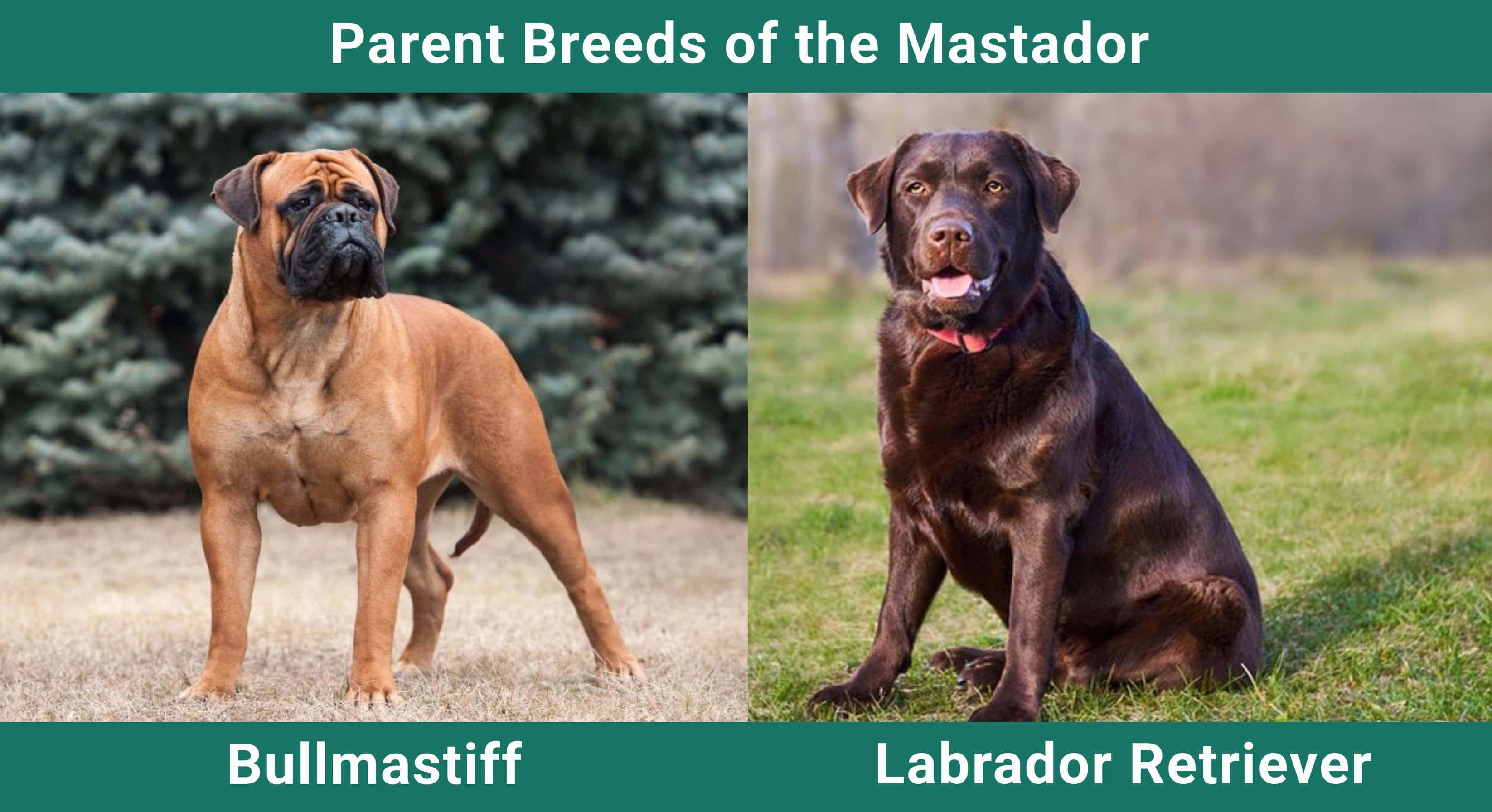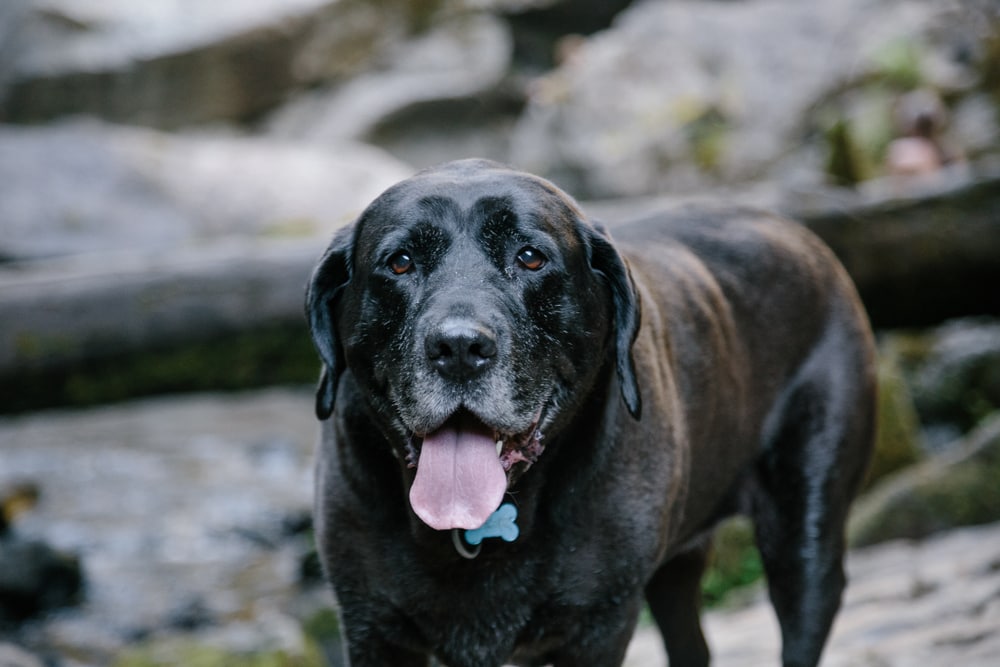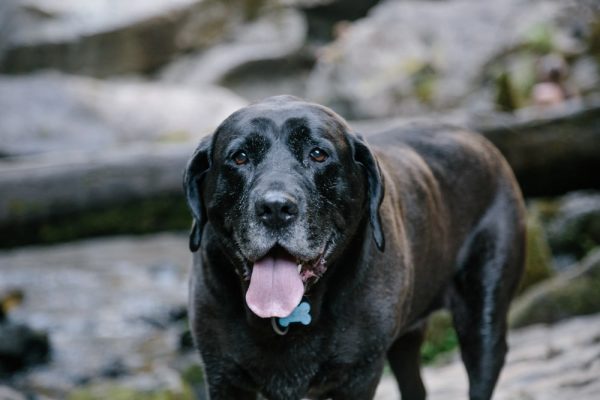Click Below to Skip Ahead
A Mastador is a unique dog breed that is a cross between a Bullmastiff and a Labrador Retriever. This particular breed has only been around for about 30 years, but it is thought to have originated in America since both the Bullmastiff and Labrador are popular dogs in the United States.
But let’s get something straight: Mastadors are not small dogs by any means. If you’re looking for a lap dog that will fit in your small apartment, this is not the dog for you. But if you want a big, loving, and loyal dog that will serve and protect your family, then these guys fit the bill.
Breed Overview
Height:
28 – 36 inches
Weight:
100 – 160 pounds
Lifespan:
8 – 14 years
Colors:
Brown, black, yellow, brindle
Suitable for:
Families looking for a guard dog, families with a big yard
Temperament:
Protective, courageous, loyal, social, great with children
Although their size may seem intimidating, Mastadors are gentle giants as long as they are in the care of a loving family. They have a quiet temperament but are highly sociable dogs when it comes to their family. Because of this, they make great watchdogs who only tend to bark when alerted.
Since they are a crossbreed, the personality of every Mastador is different based on what traits they inherited from the Bullmastiff parent or Labrador parent. If you’re considering owning one of these wonderful dogs, we’ll share everything you need to know in this article.
 Mastador Puppies
Mastador Puppies

When buying a Mastador puppy, you never know what you’re going to get. That’s one of the fun things about these dogs. You get to figure out their personality as they grow up. But because of this, it’s important to go in with an open mind and without any predisposed ideas as to what type of dog you want.
We say this because Bullmastiffs and Labradors have two very different personalities. Bullmastiffs are affectionate, brave, and loyal dogs. Labradors are active, friendly, and outgoing. If you buy a Mastador puppy, he could have any combination of these traits. Watching how they interact with other puppies in the litter can give you somewhat of an idea of your puppy’s personality, but you still may not see their full personality until they get a bit older.
Another big variation in Mastador puppies is their coloring. Colors usually range from blonde to brown to black or a combination of those. Generally, they’ll inherit the color of the Labrador parent, but this isn’t always the case. You may find puppies that take after the Bullmastiff parent and are red, fawn, or brindle in color.

Temperament & Intelligence of the Mastador
Describing the temperament of a Mastador can be tricky considering that they’re the result of two very different dog breeds, especially if you aren’t afforded the opportunity to meet the parent dogs. That’s yet another reason why buying from a reputable breeder is a good idea. In addition to getting to meet your puppy, it’s likely that you’ll get to meet the parents as well.
Even if you don’t get to meet the parents, we can still look at the overall temperaments of the two dog breeds: Bullmastiff and Labrador Retriever. To reiterate, it’s not a guarantee what traits your Mastador will get, but at least this way you can get a general idea of some of the traits and temperaments that you might encounter in an effort to learn a bit more about these fascinating dogs.
Let’s first look at the similarities between Bullmastiffs and Labradors. These will be the temperaments that you’re most likely to see in your Mastador since they are characteristic of both parents. For starters, both dogs are highly affectionate toward their families. Labradors are just a bit more affectionate than Bullmastiffs, but when you combine the two, you can begin to see why these dogs just want to hang around you all the time.
Both Labradors and Bullmastiffs are also highly trainable, and as a result, Mastadors are as well. You’ll also learn that your Mastador doesn’t seem to bark too much. In general, they are very quiet dogs who prefer to socialize in other ways. But both of their parents make great watchdogs and protectors, so Mastadors will bark to alert you of something if needed.
Now let’s look at the differences between Labradors and Bullmastiffs. These are temperaments that you may or may not see in your Mastador depending on how dominant one parent’s traits are over the other’s. Or, you may see a temperament in your Mastador that is sort of in the middle of both parent’s traits.
Perhaps the biggest difference in temperament comes from the fact that Labradors are considered sporting dogs while Bullmastiffs are considered working dogs. As a result, Labradors tend to be more active and have more energy, while Bullmastiffs sometimes just prefer to lay around and be lazy. Usually, in Mastadors, this results in a temperament that is sometimes playful and sometimes mellow.
Finally, Labrador Retrievers are a lot more outgoing and open to strangers while Bullmastiffs are more cautious and reserved. This is another area in which your Mastador’s personality could go either way. But in general, Mastadors tend to stay on the side of wariness when it comes to strangers.
Are These Dogs Good for Families?
You don’t have to worry about Mastadors getting along with other members of your family. Both parent breeds are great family dogs. With Mastadors, the more people that are there to love them, the better off and happier they are. To them, it means more people that they can snuggle up on the couch with.
What you do have to be aware of is if you have small children. Labradors are great around kids, and so are Bullmastiffs in general. However, these dogs can get quite large when they are fully grown, and small children may find them intimidating. Mastadors aren’t aggressive dogs by any means, but it is possible that they could knock down a child out of sheer excitement, not because they’re trying to hurt them. With proper supervision and training, you should be able to prevent things like that from happening.
Does This Breed Get Along with Other Pets?
Mastadors are great with other dogs. They see them as one more thing for them to interact and play with. If you do have dogs of other breeds, you should be far more concerned with how your other dogs are going to get along with a Mastador rather than the other way around. While other dogs aren’t usually a problem for Mastadors, you may need to watch them closely around smaller pets. Labradors are sport dogs who are bred to hunt, so if your Mastador inherits any of the Labrador traits, he may see pets such as hamsters, guinea pigs, rabbits, or even cats, as prey.
Things to Know When Owning a Mastador:
Food & Diet Requirements
Mastadors don’t require any special day, but they are prone to becoming overweight. This is due to their lower activity levels and the Bullmastiff in them. You have to be careful not to overfeed them. When you do feed them, they should be eating high-quality dog food that is high in protein and low in fat. This will help to keep their muscles lean and maintain their weight.
Any food that you give them should be formulated for large adult dogs. Follow the recommendations listed on the back of the bag for how much to feed them. This amount is usually based on the weight and age of the dog.
Exercise
Mastadors aren’t the most playful dogs, but they do need exercise daily to help maintain their weight. Although they sometimes prefer to just stay inside and lay around, being cooped up inside all day is not good for them. These aren’t dogs that can live in small apartments, they need a big yard (preferably fenced-in for safety) in which they can walk around and hone their watchdog skills.
Even though your Mastador may not be interested in playing fetch, he will enjoy going for long walks. This is one of the best forms of exercise that you can give him, and sometimes they may need several walks per day in order to meet their exercise needs. He may also enjoy going to the dog park to run around and interact with other dogs.
Training
Both Labradors and Bullmastiffs are both highly trainable dogs and so are Mastadors as a result. They aren’t necessarily eager to learn and they may not immediately respond to training. But since they are a combination of working and sporting dogs, they take commands really easily and will want to please their owners.
When training Mastadors, it is important that you praise and reward them for following commands. This will encourage your dog. If you use harsh words and scold them, they may shut down and become unresponsive to training due to their sensitivity. If you’re uncomfortable with training your dog or your methods seem to be ineffective, you can always seek out advice or help from a professional dog trainer.
Grooming ✂️
Mastadors have short hair, but they shed a lot. If they stay inside and you don’t want your clothing to be covered in dog hair, it may be necessary for you to brush their coat every day to remove some of the loose hair. They don’t get dirty and their fur doesn’t get tangled as much as long-haired dogs, so they don’t have to be bathed as frequently. Usually, one bath per month is enough to keep them clean, but you can always bathe them more frequently in an effort to cut down on shedding.
Health and Conditions
One of the good things about Mastadors is that they aren’t purebred dogs. That means that they aren’t susceptible to as many genetic conditions since their lineage is more diverse. However, they can be susceptible to some of the health problems that affect both Labradors and Bullmastiffs.
One of the most serious health problems that can affect Mastadors is bloat. This condition occurs when gas, fluid, or food fills your dog’s stomach. This puts pressure on his organs and can even restrict blood flow to their heart and cause their stomach to tear.
This condition is dangerous and can be deadly. Symptoms of bloat include drooling, restlessness, and a swollen stomach. (Mastadors don’t drool a lot, so excessive drooling can be a telltale sign that something is wrong.) It’s important to get your dog to a veterinarian right away if you notice any of these symptoms or suspect that something is wrong with your dog.
One minor health condition that affects Mastadors more so than other dogs is skin sensitivity (atopic dermatitis). It is similar to eczema in humans. This is a common condition in Bullmastiffs that often gets passed on to their offspring.
When Mastadors have allergies, they don’t sneeze like you and I do. Instead, their skin gets itchy, flaky, or bumpy. It doesn’t cause any major health problems, just discomfort and excessive itching, scratching, and redness. Your veterinarian can diagnose this condition and provide treatment that can help to ease any discomfort.
- Allergies
- Ear infections
- Eye infections
- Skin conditions/sensitivity
- Bloat
- Cancer
- Elbow dysplasia
- Epilepsy
- Heart disease
- Hip dysplasia
- Obesity
Male vs Female
There is very little difference between male and female Mastadors. The biggest difference is their size, as males can get a little bit bigger and weigh more than females. Which gender you choose is ultimately up to your preference, but there are a couple of things that you need to consider.
One of the biggest considerations to keep in mind is that female Mastadors can become pregnant. If you aren’t planning on breeding your dog, getting her spayed can prevent any unwanted puppies as well as cut down on certain types of cancer.
Male Mastadors aren’t necessarily more aggressive, but male dogs, in general, do tend to mark their territory more in an effort to ward off any other male dogs. If you have other female dogs, your male Mastador may also try to mate with them. Getting your male dog neutered can help cut down on this and any other unwanted behavior. And just like with females, neutering can help prevent certain types of cancer in dogs.
3 Little-Known Facts About the Mastador
1. Mastadors Can Be Wary of Strangers
Although they love and are very affectionate toward their families, Mastadors may be a bit more cautious and aloof toward new people. It’s not that they are scared of strangers, they are just incredibly loyal to their families and want to protect them.
2. Puppies Are Energetic, But Mellow as They Turn Into Adults
Do you remember how we said that you never know the full personality of a Mastador until it reaches adulthood? Although they are quite active as puppies, Mastadors turn into major couch potatoes as they grow into adults.
3. They Sometimes Forget How Big They Are
A protective and affectionate nature means that these dogs constantly want to be near their humans. They aren’t afraid to climb up in your lap and lay on you, even if they’re twice your size. Mastadors make great sleeping companions if you live by yourself, but you may have to limit them sleeping with you if you share your bed with someone else due to the amount of space they take up.
 Final Thoughts
Final Thoughts
Mastadors are loyal dogs that are also very affectionate and protective. They have some of the best qualities of both of their parents: the Labrador Retriever and the Bullmastiff. If you’re considering getting one of these lovable dogs, it is important that you have the space to accommodate them as well as a big yard for them to run around in. These gentle giants will make a wonderful companion and watchdog for your family for many years to come.
See also:
Featured Image Credit: Corrie Mick, Shutterstock



 Mastador Puppies
Mastador Puppies





